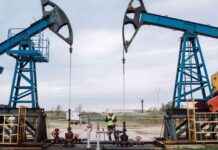U.S. Homebuilders Face Tariff Concerns, Sentiment Reaches 5-Month Low
The sentiment among single-family homebuilders in the United States hit a five-month low in February, primarily due to growing apprehension over tariffs that are expected to increase their costs significantly. The Housing Market Index (HMI) of the National Association of Home Builders (NAHB) saw a notable drop of 5 points from January, settling at a reading of 42. Any score below 50 is indicative of negative sentiment, marking a concerning trend for the industry. This decline is a stark contrast to the index’s position at 48 during the same period last year.
The Impact of Tariffs on Homebuilders
The sentiment among homebuilders is heavily influenced by several key factors, particularly the impending impact of tariffs on their operations. Carl Harris, NAHB Chairman and a seasoned home builder from Wichita, Kansas, highlighted the significance of pro-development policies in mitigating the challenges faced by builders. However, the prevailing policy uncertainty and escalating costs associated with tariffs have led to a reset in expectations for the year 2025, as reported in the latest HMI.
The Components of the Housing Market Index
The breakdown of the HMI into three key components reveals a comprehensive overview of the challenges faced by homebuilders. Current sales conditions saw a decline of 4 points, settling at 46, while buyer traffic fell by 3 points to 29. Sales expectations for the next six months experienced a significant plunge of 13 points, reaching a level of 46, the lowest since December 2023. The combination of these factors underscores the growing concerns within the industry, impacting various aspects of homebuilding operations and future sales projections.
Expert Insights on Market Trends
Robert Dietz, the NAHB chief economist, shed light on the critical role of international trade in the current landscape of homebuilding. With a substantial percentage of appliances and softwood lumber sourced from international markets, the uncertainty surrounding tariffs has further heightened the apprehensions of builders regarding escalating costs. This dynamic environment, coupled with existing challenges such as elevated mortgage rates and rising home prices, has created a complex scenario for homebuilders to navigate.
Navigating Challenges in the Housing Market
Despite a period of steady growth in builder sentiment since August, driven by expectations of lower mortgage rates and favorable policy changes, the recent downturn marks a significant shift in the industry landscape. Single-family housing starts are trailing behind the previous year’s figures, despite a limited supply of existing homes for sale. The timing of this decline, just before the crucial spring market, raises concerns about the potential shortage of supply in the market, impacting buyer demand and overall market dynamics.
Ryan Marshall, CEO of PulteGroup, emphasized the challenges faced by homebuyers in the current market conditions. The impact of elevated mortgage rates on buyer demand has led to affordability constraints, influencing purchasing decisions and market trends. The reduced effectiveness of sales incentives and price adjustments further underscores the evolving dynamics of the housing market, where traditional strategies may no longer yield the desired results.
In conclusion, the declining sentiment among U.S. homebuilders reflects a broader trend of uncertainty and challenges within the industry. As builders navigate the complexities of tariffs, rising costs, and evolving market dynamics, the need for adaptive strategies and innovative solutions becomes increasingly crucial. The resilience of the homebuilding sector will be tested in the coming months, as industry stakeholders work towards addressing these critical issues to ensure sustainable growth and stability in the housing market.



















